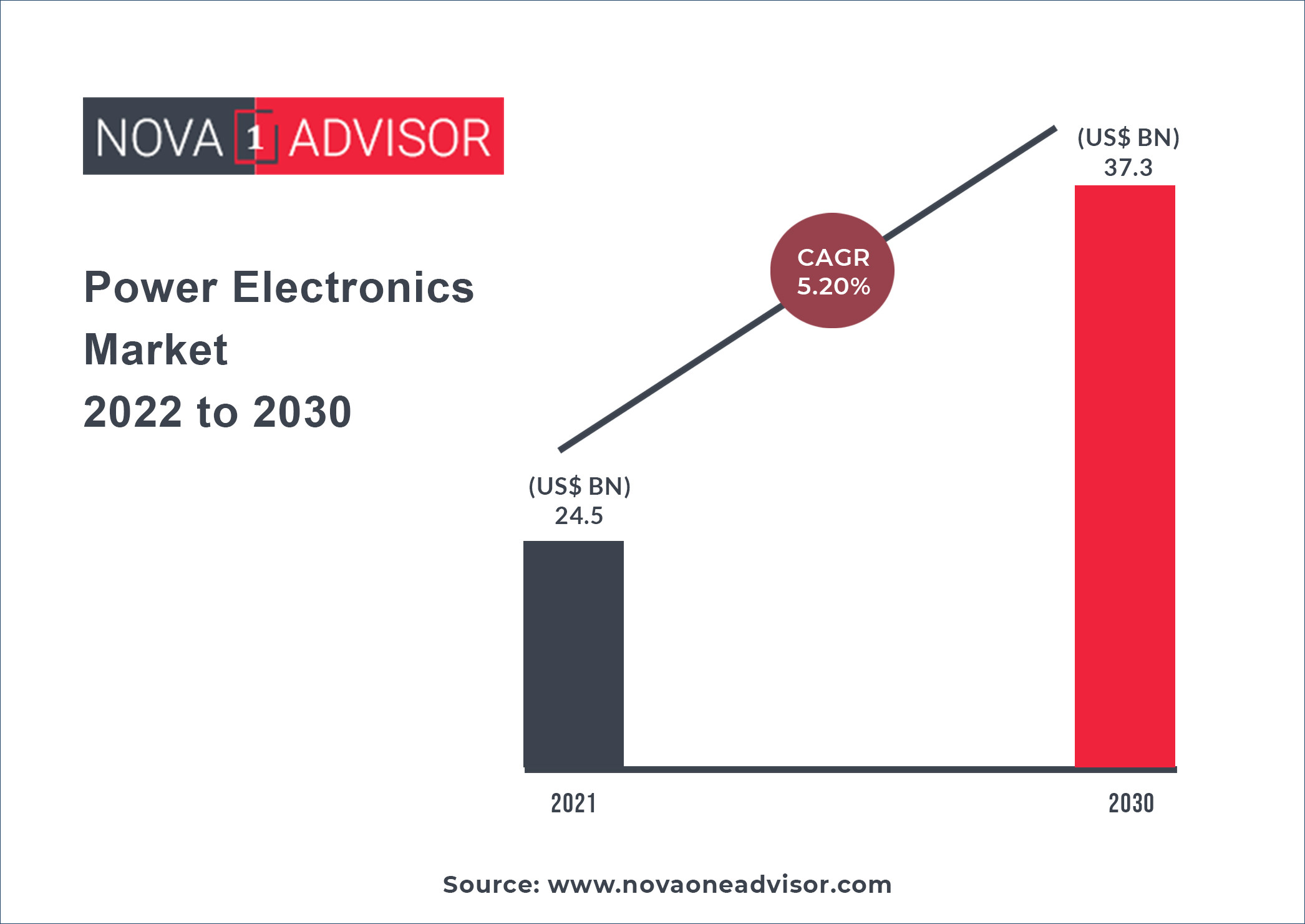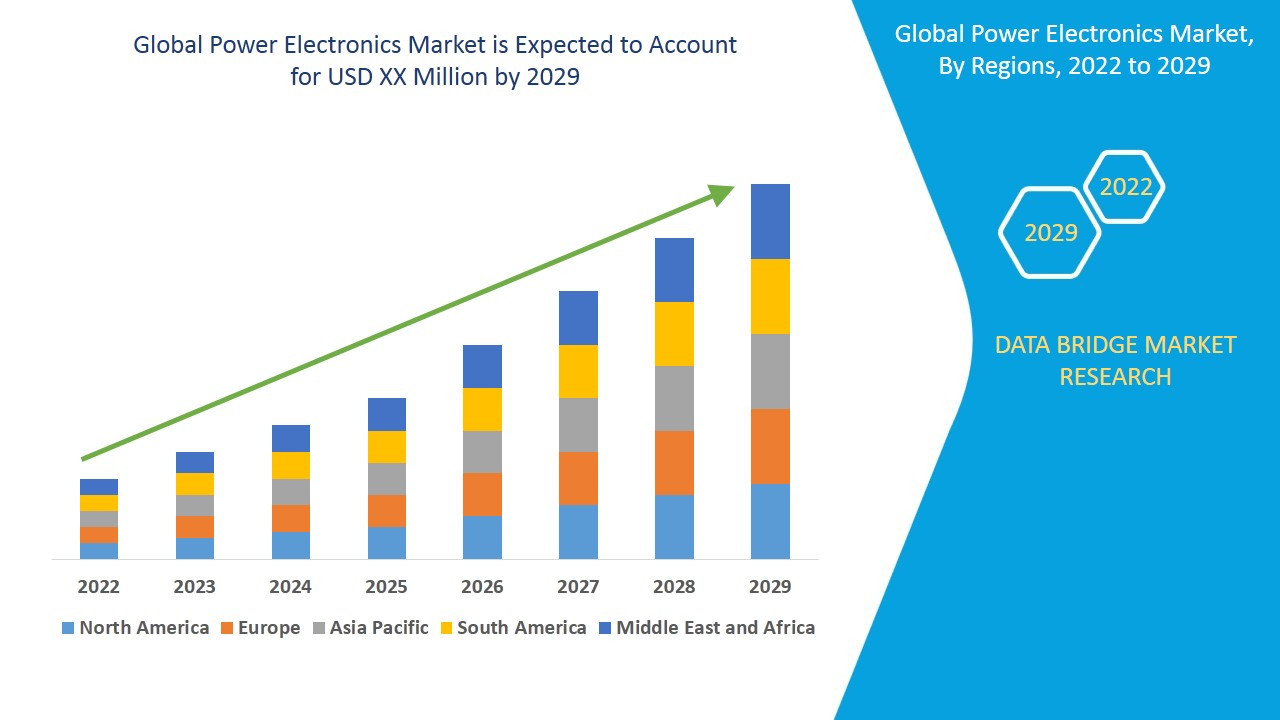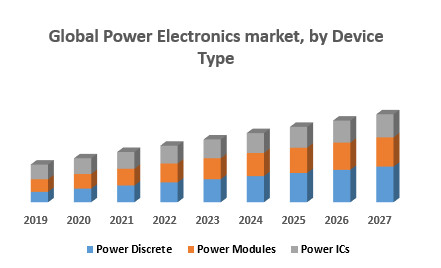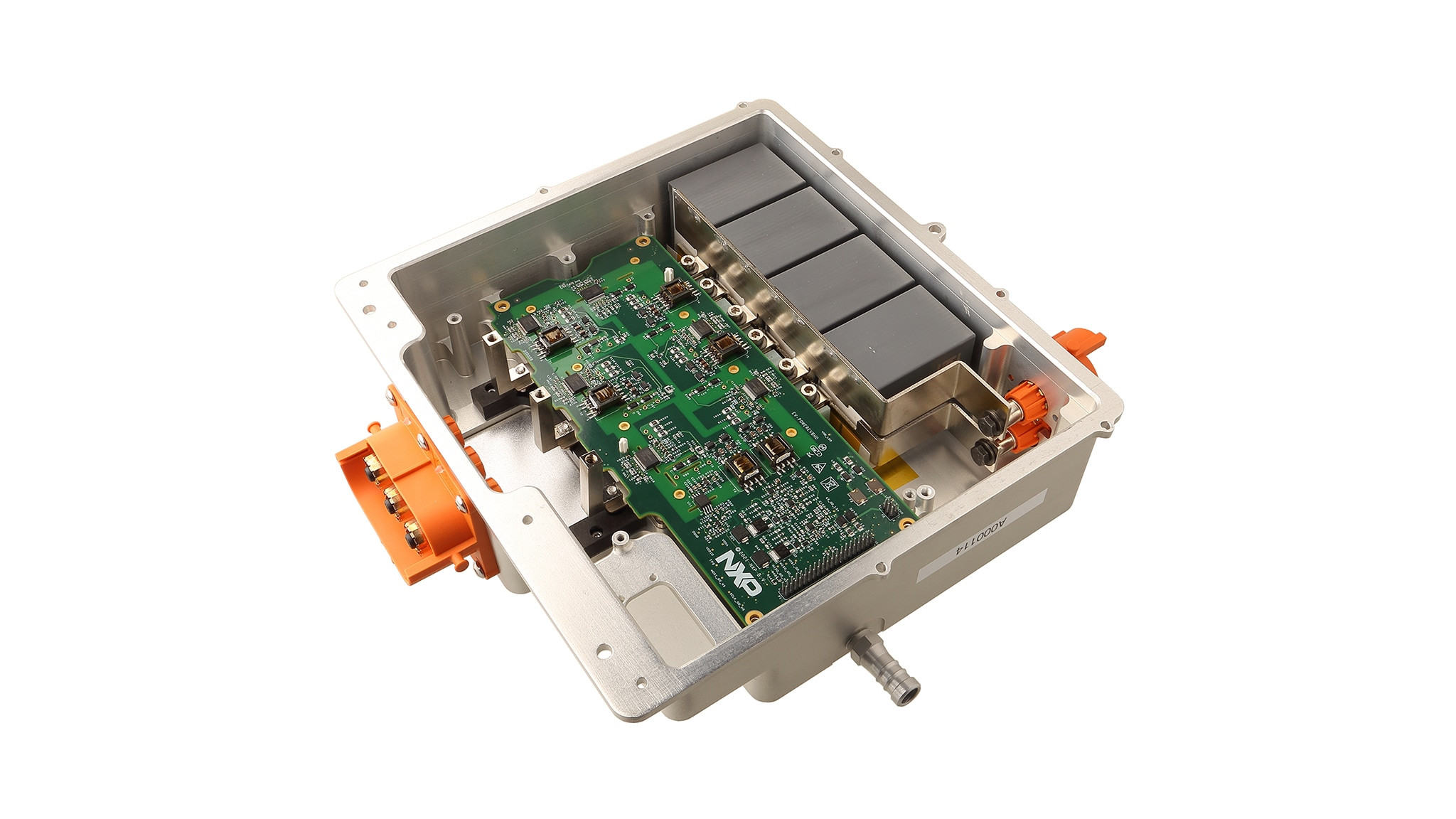Power electronics play an important role in electrified vehicle applications that provide compact and highly efficient solutions to power conversion. Power electronics is a circuitry device that transfers power from a source to a load in an efficient, compact, and robust manner to ensure convenient utilization. To manage the flow of electrical energy, power electronics technology entails the effective conversion, supervision, and control of electric power. It can be used for anything from laptop chargers to inverters that run renewable energy systems and electric cars. Its duties include waste reduction, efficiency optimization, and electrical flow regulation.
Key Players in the Market
A power module, sometimes referred to as a power electronic module, provides physical confinement for many power components, most often power semiconductors. The power packages offer increased power density and, in many circumstances, greater reliability when compared to discrete power. Metal oxide semiconductor field effect transistors, or power MOSFETs, are semiconductors with high power that are utilized as electronic switch devices to regulate loads according to specifications. High-frequency switching and incredibly low resistance are achievable with power devices.
This device is used to control the conversion of electric power from one form to another using diodes, transistors, and thyristors. Operations at high voltage or high current can be efficiently executed by utilizing power electronics devices, as they exhibit faster switching rates at higher efficiency. Moreover, power electronics control both unidirectional as well as bidirectional flow of energy, depending upon the usage, and the regenerated energy can be sent back for utility. Power electronics devices are expected to serve as the future key technologies, which help to increase system efficiency and performance in automotive and energy-saving applications.
Major Players Operating in the Power Electronics Market:
- ABB
- Analog Devices, Inc.
- Efficient Power Conversion Corporation
- Euclid Techlabs
- Fuji Electric Co., Ltd.
- Infineon Technologies AG
- Littelfuse, Inc.
- Microchip Technology Inc.
- Mitsubishi Electric Corporation
- Navitas Semiconductor
- NXP Semiconductors
- ON Semiconductor
- Qorvo, Inc.
- Renesas Electronics Corporation
- ROHM CO., LTD.
Trends Driving Growth
The global Power Electronics market has seen several trends in recent years, and understanding these trends is crucial to stay ahead of the competition.
The global Power Electronics market also presents several opportunities for players in the market. The increasing demand for Power Electronics in various industries presents several growth opportunities for players in the market.
Market Segmentation
The power electronics market is segmented based on device type, material, and end-user.
Device Type
- Power Discrete: These are individual power semiconductor devices that are used in a variety of applications. The market for power discrete devices is expected to grow at a significant rate over the next few years, driven by the increasing demand for power electronics in applications such as electric vehicles, renewable energy, and industrial automation.
- Power Module: These are integrated circuits that combine multiple power semiconductor devices and passive components into a single package. Power modules offer several advantages over discrete devices, including higher efficiency, better thermal performance, and smaller size. The market for power modules is expected to grow at a faster rate than the market for power discrete devices.
- Power IC: Power ICs are integrated circuits that include all the necessary circuitry to control and manage power. The market for Power ICs is expected to grow at a moderate rate over the next few years, driven by the increasing demand for power electronics in consumer electronics applications, such as smartphones, tablets, and laptops.
Material
- Power Management: Power management components are used to regulate and control the flow of power in electronic systems. The market for power management components is expected to grow at a healthy rate over the next few years, driven by the increasing demand for power electronics in applications such as electric vehicles, data centers, and industrial automation.
- UPS: Uninterruptible power supplies (UPS) are used to provide backup power in the event of a power outage. The market for UPS systems is expected to grow at a steady rate over the next few years, driven by the increasing demand for reliable power in applications such as data centers, hospitals, and telecommunications networks.
- Renewable: Renewable energy components are used in solar, wind, and other renewable energy systems. The market for renewable energy components is expected to grow at a rapid rate over the next few years, driven by the increasing demand for clean energy.
End User
- Telecommunications: The telecommunications industry is a major user of power electronics. Power electronics are used to regulate the flow of power in telecommunications networks, such as base stations, data centers, and communication equipment. The market for power electronics in the telecommunications industry is expected to grow at a steady rate over the next few years, driven by the increasing demand for high-speed data networks.
- Industrial: The industrial sector is another major user of power electronics. Power electronics are used in a variety of industrial applications, such as motors, drives, welding equipment, and industrial automation systems. The market for power electronics in the industrial sector is expected to grow at a healthy rate over the next few years, driven by the increasing demand for automation and efficiency in manufacturing processes.
- Automotive: The automotive industry is a rapidly growing market for power electronics. Power electronics are used in electric vehicles, hybrid vehicles, and other automotive applications. The market for power electronics in the automotive industry is expected to grow at a rapid rate over the next few years, driven by the increasing demand for electric vehicles.
- Consumer Electronics: The consumer electronics industry is a major user of power electronics. Power electronics are used in smartphones, tablets, laptops, TVs, and other consumer electronics devices. The market for power electronics in the consumer electronics industry is expected to grow at a steady rate over the next few years, driven by the increasing demand for portable and energy-efficient devices.
- Aerospace: The aerospace industry is a specialized market for power electronics. Power electronics are used in aircraft systems to control the flow of power and manage energy consumption. The market for power electronics in the aerospace industry is expected to grow at a moderate rate over the next few years, driven by the increasing demand for fuel-efficient and environmentally friendly aircraft.
Regional Analysis
The power electronics market is segmented into North America, Europe, Asia Pacific, South America, and the Middle East & Africa. The Asia Pacific region is expected to dominate the power electronics market during the forecast period due to the rapid growth of the electronics and automotive industries in the region. The region is also expected to witness significant growth in the renewable energy sector. The European region is expected to follow closely behind the Asia Pacific region. The North American region is expected to experience moderate growth in the power electronics market due to the increasing demand for power electronics in the automotive, industrial, and consumer electronics sectors.
Challenges in the Power Electronics Market
Despite the strong growth prospects for the power electronics market, there are a few challenges that could hamper growth. These challenges include:
- High Cost: Power electronics devices can be expensive to manufacture, particularly those that use advanced materials such as silicon carbide and gallium nitride. This high cost can limit adoption in some applications.
- Complexity: Power electronics devices can be complex to design and manufacture. This complexity can make it difficult for some manufacturers to enter the market and can also lead to higher manufacturing costs.
- Thermal Management: Power electronics devices can generate a significant amount of heat, which can damage the devices and reduce their efficiency. Managing the heat generated by power electronics devices is a key challenge for manufacturers.
- Reliability: Power electronics devices must be highly reliable, as they are often used in critical applications. Ensuring the reliability of power electronics devices is a key challenge for manufacturers.
Conclusion
The power electronics market is expected to continue to grow at a rapid pace over the next few years, driven by the increasing demand for power electronics in a variety of applications. The growth of the market will be driven by factors such as the increasing demand for electrified vehicles, the growth of the renewable energy sector, and the increasing demand for automation and efficiency in manufacturing processes. However, the market is also facing some challenges, including high costs, complexity, thermal management, and reliability. Manufacturers that can overcome these challenges will be well-positioned to benefit from the growth of the power electronics market.
A Look Towards the Future
The power electronics market is poised for significant growth in the coming years. The increasing adoption of electric vehicles, renewable energy sources, and industrial automation is driving the demand for power electronics. As the demand for power electronics continues to grow, manufacturers are expected to focus on developing new and innovative products that offer greater efficiency, reliability, and affordability. Additionally, manufacturers are expected to focus on improving their manufacturing processes to reduce costs and improve product quality. The power electronics market is a dynamic and evolving industry with a bright future ahead.


















